Choosing between a Mercedes 420 SE and a Lexus LS depends on your priorities. The 420 SE offers classic Mercedes luxury and European driving feel, while the LS excels in reliability and smooth, quiet performance. Both are excellent luxury sedans from their eras, but their core strengths cater to different driver preferences.
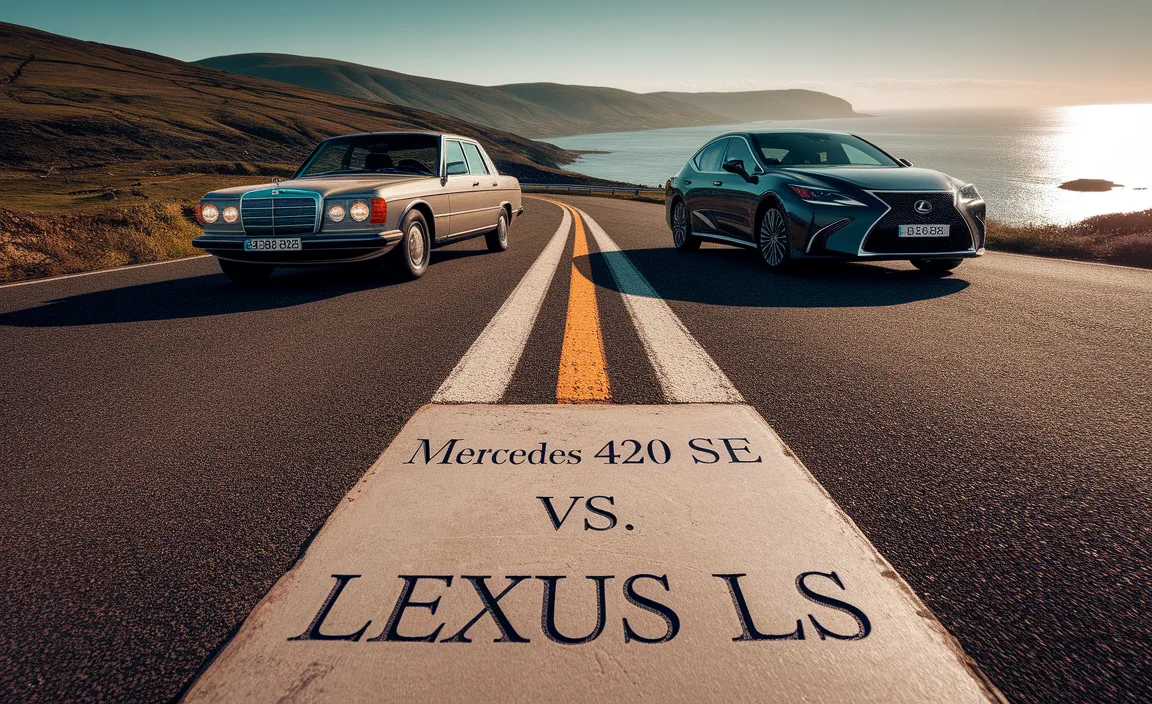
Hey there, fellow car enthusiasts! Charlie Joyce here. Have you ever found yourself staring at two iconic luxury sedans from different continents, wondering which one truly reigns supreme for your garage? It’s common to feel a bit lost when comparing legends like the Mercedes 420 SE and the Lexus LS. These cars represent peak automotive engineering from their respective manufacturers. But don’t worry, we’re going to break it all down, making it super clear which one might be the perfect fit for you. We’ll look at their history, what’s under the hood, how they feel on the road, and what kind of ownership experience you can expect. Let’s get started and uncover the essential differences!
Mercedes 420 SE vs Lexus LS: A Tale of Two Luxury Sedans
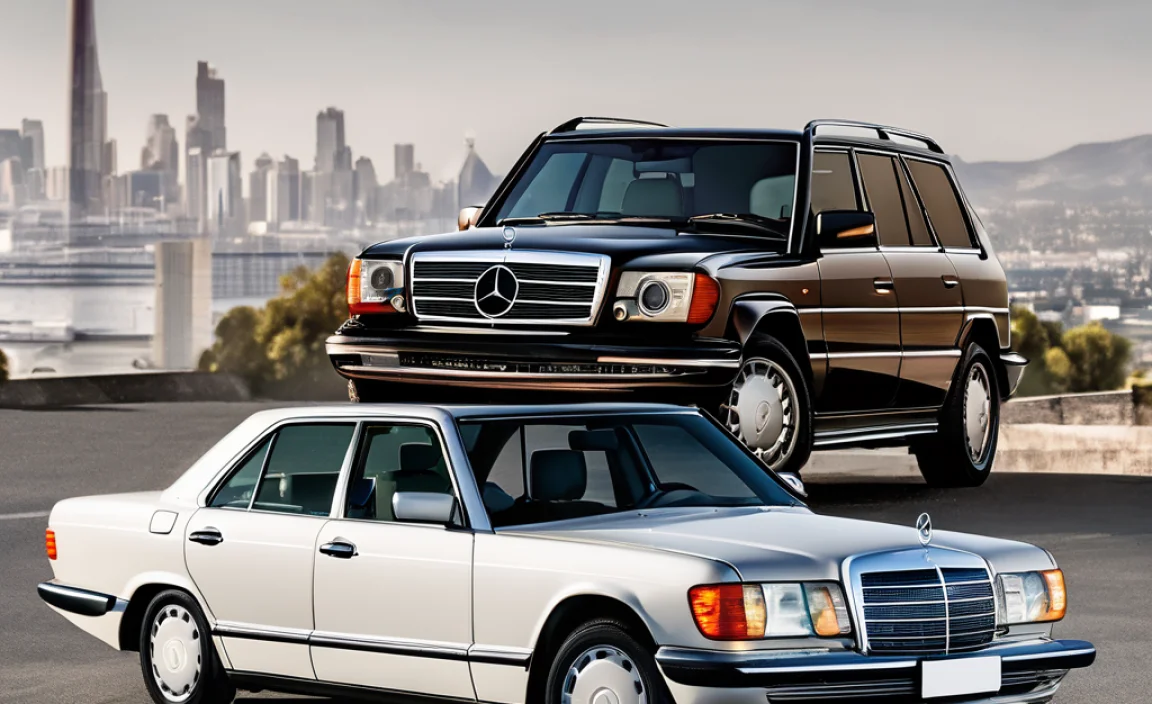
When you’re in the market for a premium sedan, especially one with a bit of history, two names often rise to the top: Mercedes-Benz and Lexus. The Mercedes 420 SE (often part of the W140 generation, though the badge appeared earlier) and the Lexus LS (particularly the first generation, LS 400) are fantastic examples of what these brands did best in their prime. They competed fiercely to offer sophisticated technology, supreme comfort, and powerful performance. But dig a little deeper, and their philosophies really diverge. This comparison will help you understand exactly what each car brings to the table, so you can make an informed decision based on what you value most in a luxury vehicle. We’ll also touch upon their closest rivals like certain Audi V8 models or BMW 735i variants for broader context.
The Mercedes 420 SE: European Panache and Engineering Prowess
The Mercedes 420 SE, especially the W140 generation that began production in 1991, was a statement. It was built with an almost obsessive attention to detail, aiming to set new benchmarks in automotive engineering, safety, and luxury. Think of it as an ultra-solid, technologically advanced fortress on wheels. Mercedes-Benz has always been about a robust build quality, a commanding presence, and a driving experience that feels substantial and secure. The 420 SE embodies this perfectly, offering a ride that’s smooth yet capable, with an interior designed for ultimate passenger comfort and driver focus. It’s a car that feels built to last, designed with an emphasis on sophisticated engineering that was often ahead of its time.
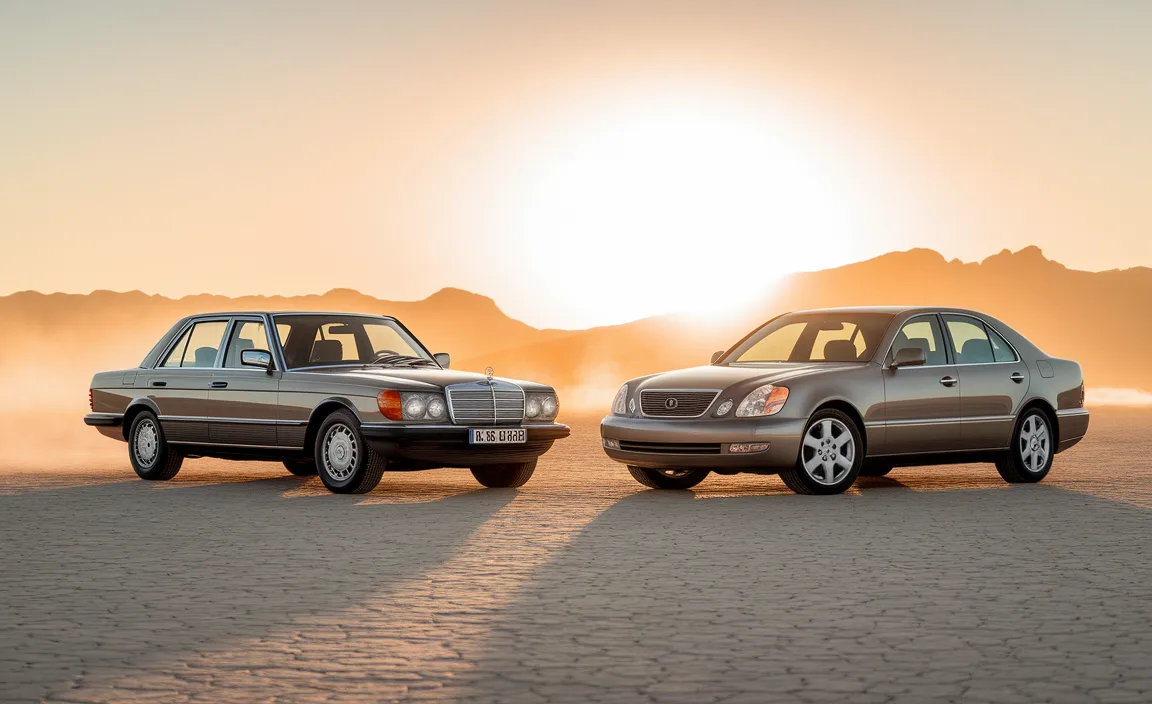
Under the Hood and Performance
At its heart, the Mercedes 420 SE (often referring to the V8 variants of the S-Class) features a potent V8 engine. For example, the M119 engine, found in models like the 400 SE/SEL and later the 420 SE/SEL, was a masterpiece. It offered smooth, effortless power delivery, providing ample acceleration for comfortable cruising and confident overtaking. These engines were known for their durability and refinement, contributing to the car’s overall sense of effortless capability.
- Engine Type: Typically a V8 (e.g., 4.2-liter or 5.0-liter depending on exact model year and designation within the S-Class lineage).
- Horsepower: Ranged from approximately 270 to 320 hp, depending on the specific variant and year.
- Torque: Substantial torque figures for smooth, strong acceleration.
- Transmission: Usually paired with a smooth-shifting automatic transmission.
- 0-60 mph: Generally in the mid to high 7-second range, offering brisk performance.
The engineering focus for Mercedes during this era was on creating a serene and stable ride. The independent multi-link suspension, combined with advanced (for the time) electronic damping systems on some models, allowed the 420 SE to soak up bumps with remarkable grace. It felt planted and secure, especially at higher speeds, a signature trait of German engineering prowess.
Interior and Comfort Features
Stepping inside a 420 SE is like entering a private club. The cabin is meticulously crafted with high-quality materials like rich leather, real wood trim, and solid switchgear. Everything feels substantial and well-built. The seats are designed for long-distance comfort, offering excellent support and adjustability.
- Seating: Plush, supportive, and highly adjustable front seats. Ample rear legroom, especially in SEL (long wheelbase) versions.
- Materials: Premium leather, genuine wood veneers, and soft-touch plastics create a luxurious ambiance.
- Technology: While dated by modern standards, it featured advanced systems for its time, such as dual-zone climate control, power-adjustable seats with memory, and an advanced (for the 90s) infotainment system.
- Sound Insulation: Exceptional, creating a quiet cabin environment.
The Driving Experience
Driving a 420 SE is about experiencing refined power and supreme confidence. The steering is precise, though it might feel a bit heavier than modern systems. The car communicates a sense of invincibility on the road. It handles winding roads competently, but its true strength lies in its ability to devour highway miles in absolute comfort. It’s a car that makes you feel cocooned from the outside world, allowing you to relax and enjoy the journey.
The Lexus LS 400: Japanese Reliability and Unrivaled Smoothness
When Lexus launched the LS 400 in 1989, it sent shockwaves through the established luxury car market. Toyota’s luxury division aimed to surpass the best from Europe and America, not by copying, but by excelling in areas like build quality, reliability, and quiet, refined operation. The first-generation LS 400 (UCF10) was a triumph of meticulous design and engineering, offering a level of refinement and dependability that quickly earned it a loyal following.
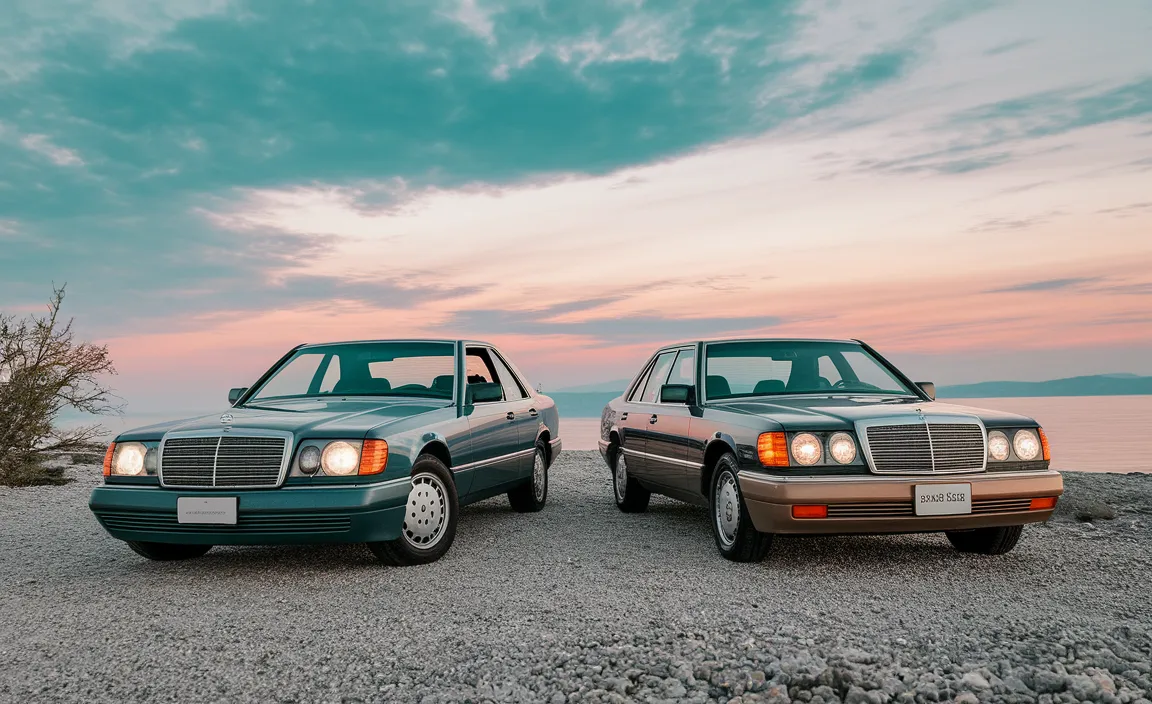
Under the Hood and Performance
The LS 400 is powered by a silky-smooth 4.0-liter V8 engine. This engine, shared across various Lexus and Toyota models, was renowned for its quiet operation and impressive reliability. It provided more than enough power for effortless cruising and confident acceleration, all while remaining incredibly hushed.
- Engine Type: 1UZ-FE 4.0-liter V8.
- Horsepower: Approximately 250 hp in early models, later increasing slightly.
- Torque: Strong torque output for smooth acceleration, rated around 260 lb-ft.
- Transmission: Paired with a sophisticated 4-speed automatic transmission.
- 0-60 mph: Typically around 8 seconds, feeling quicker due to its refinement.
Lexus’s approach to the suspension was focused on creating a supple ride. The LS 400 features an independent double-wishbone suspension at all four corners, tuned to absorb road imperfections with exceptional grace. This setup contributes to its signature quiet and smooth ride, making it feel like it’s gliding over the pavement. You can find more on the engineering principles behind such systems at reputable automotive engineering resources.
Interior and Comfort Features
The interior of the LS 400 is a masterclass in understated luxury and ergonomic design. Everything is placed logically, and the materials used are of high quality, aiming for a serene and inviting atmosphere. The focus is on the driver and passengers’ comfort and ease of use.
- Seating: Comfortable, supportive leather seats with excellent adjustability. Ample space for five adults.
- Materials: High-quality leather, optional wood trim, and soft-touch surfaces create a premium feel.
- Technology: Featured amenities like a premium sound system, automatic climate control, power-adjustable seats, and a tilt/telescoping steering wheel.
- Sound Insulation: Phenomenal, achieving one of the quietest cabins in its class.
The Driving Experience
The LS 400 offers a driving experience that is epitomized by smoothness and silence. It’s designed to isolate occupants from the road and the outside world. The acceleration is linear and quiet, the ride is incredibly soft, and the handling is predictable and secure, if not particularly sporty. It’s the quintessential long-distance cruiser, a car that makes you feel relaxed and refreshed, no matter the distance. It truly set a new standard for what a luxury sedan should feel like in terms of refinement.
Key Differences: 420 SE vs. LS 400
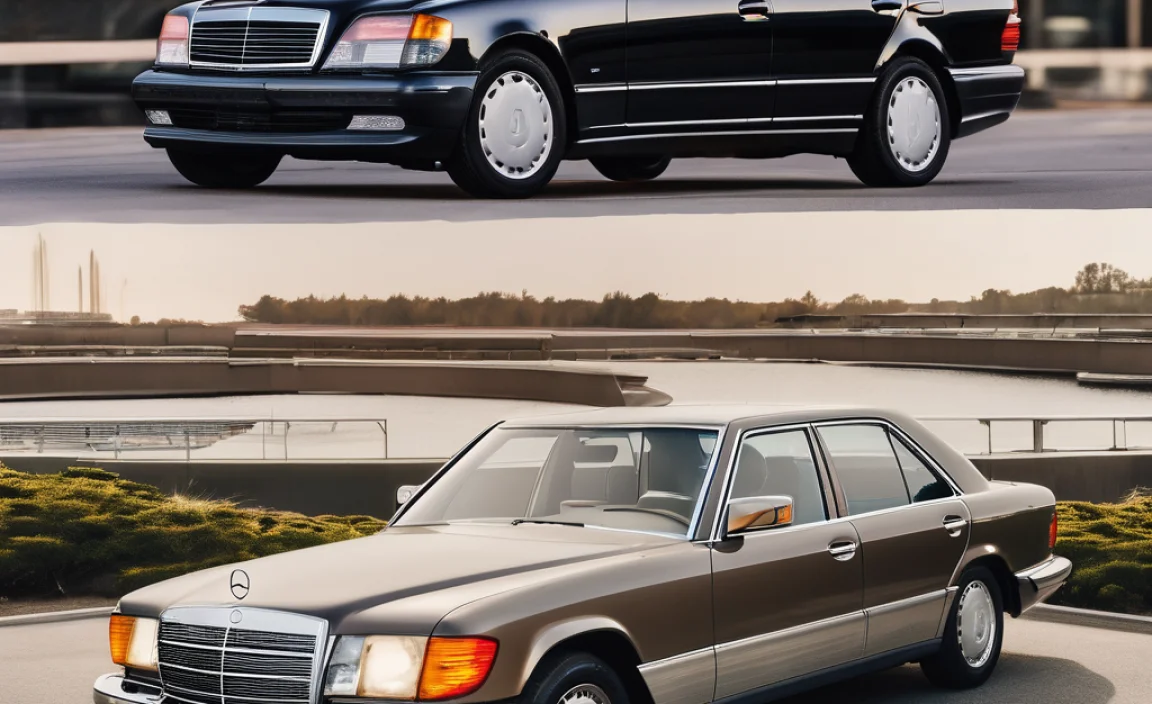
While both cars are excellent luxury sedans, their approaches and strengths are quite distinct. Here’s a breakdown of the core differences:
Performance and Driving Dynamics
The Mercedes 420 SE offers a more engaging and substantial driving experience. You feel more connected to the road, and its V8 has a satisfying, authoritative presence. It’s built for stable, confident highway cruising and feels very solid. The Lexus LS 400, on the other hand, prioritizes ultimate smoothness and silence. Its V8 is almost imperceptible, and the ride is exceptionally plush. While capable, its handling is more geared towards comfort than sharp cornering. If you like feeling the road and a bit more heft, the Mercedes might be for you. If absolute serenity is your goal, the Lexus wins.
Reliability and Maintenance
This is where the Lexus LS 400 often holds a significant advantage. Toyota, and by extension Lexus, built a reputation for exceptional reliability. The LS 400’s V8 engines and drivetrain components are known for their longevity with proper maintenance. While Mercedes-Benz vehicles are built to high standards, older, more complex German engineering can sometimes lead to more specialized and potentially costly repairs compared to the more straightforward and ubiquitously reliable Lexus components. Finding parts for a rare Mercedes variant can also be trickier than for the widely produced LS 400.
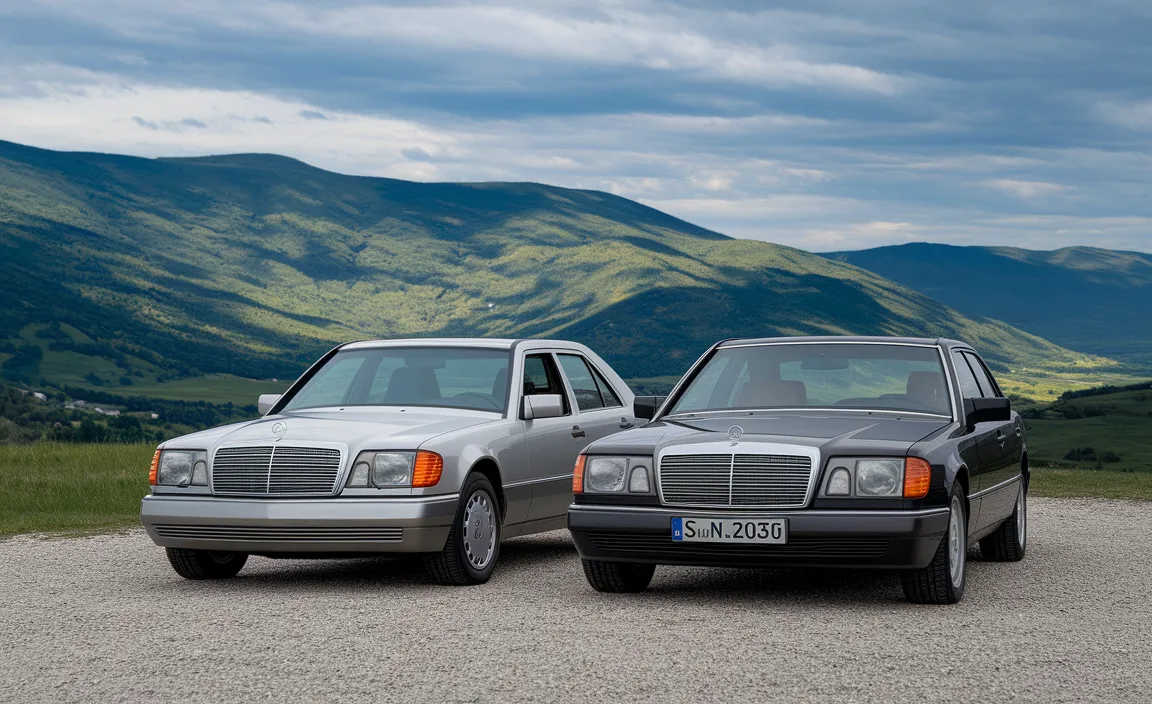
It’s important to note that regardless of the brand, any car of this age will require diligent maintenance. Here’s a quick look at typical maintenance considerations:
| Aspect | Mercedes 420 SE | Lexus LS 400 |
|---|---|---|
| Engine Complexity | High, advanced V8 engineering for its time. | Proven, robust V8 known for durability. |
| Suspension | Sophisticated multi-link, potentially complex hydraulics/electronics on some models. | Independent double-wishbone, generally simpler and very reliable. |
| Known Issues (Age-Related) | Wiring harness degradation, electronic module failures, rust in certain areas. | Some age-related wear on suspension components, occasional minor electrical gremlins. |
| Parts Availability | Can be more challenging/expensive for specific parts, especially for older or rarer variants. | Generally good, with many parts shared across Toyota/Lexus platforms. |
| DIY Friendliness | Moderate to Difficult. Requires specialized tools and knowledge for some tasks. | Moderate. More accessible for DIY work for many routine tasks. |
For detailed maintenance guides, checking out resources like the NHTSA website for recalls and service bulletins related to specific model years is always a good idea.
Interior Design and Ambiance
The Mercedes 420 SE has an interior that feels more overtly luxurious and perhaps a bit more traditional German in its design. Solid buttons, extensive wood trim, and a sense of substantial construction. The Lexus LS 400’s interior is equally luxurious but emphasizes a cleaner, more minimalist aesthetic. The focus is on ergonomics and a serene, uncluttered feel. Both offer excellent comfort, but the “feel” is different. The Merc might feel like a bespoke tailor-made suit, while the Lexus feels like a perfectly crafted cashmere sweater.
Technology and Features
Both cars were packed with technology for their era. The W140 S-Class, in particular, was known for pushing boundaries with features like dual-pane windows for sound insulation, rain-sensing wipers (on later models), and advanced climate control. The LS 400 was no slouch either, offering premium audio, automatic climate control, and power everything. However, the Mercedes often had a slight edge in sheer volume of advanced, sometimes complex, features.
Comparing with Competitors: Audi V8 and BMW 735i
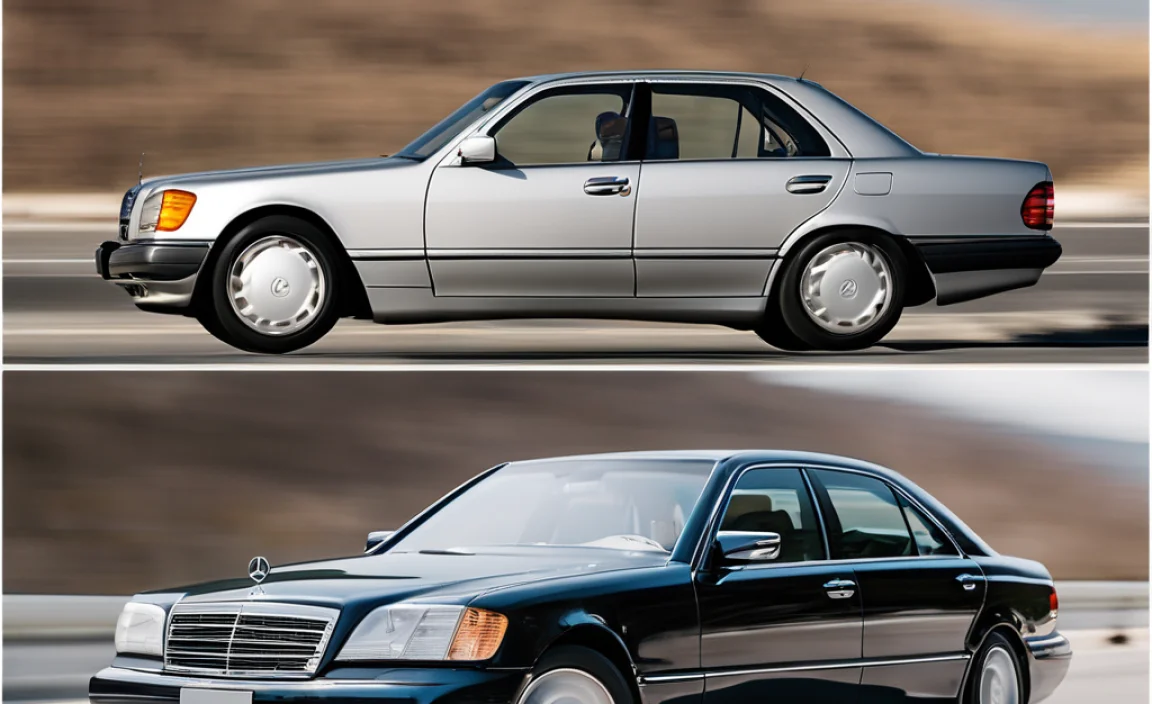
To put these two into better perspective, let’s briefly mention some of their contemporaries. The Audi V8 (which paved the way for the A8) offered sophisticated quattro all-wheel drive and a strong V8 engine, appealing to those who valued technological advancement and all-weather capability. The BMW 735i, from the E32 generation, was known for its engaging driving dynamics, advanced inline-six engine (and a V12 option in the 750i), and sporty feel, often seen as the driver’s choice in the German luxury sedan segment.
In this context:
- Mercedes 420 SE: The benchmark for solid, safe, and supremely comfortable luxury, with advanced engineering.
- Lexus LS 400: The challenger that defined reliability, quietness, and smooth, effortless luxury.
- Audi V8: Competed on technology, particularly with its AWD system, offering a different take on luxury performance.
- BMW 735i: Offered a more driver-focused experience, blending luxury with sportiness.
Which One is Right for You?
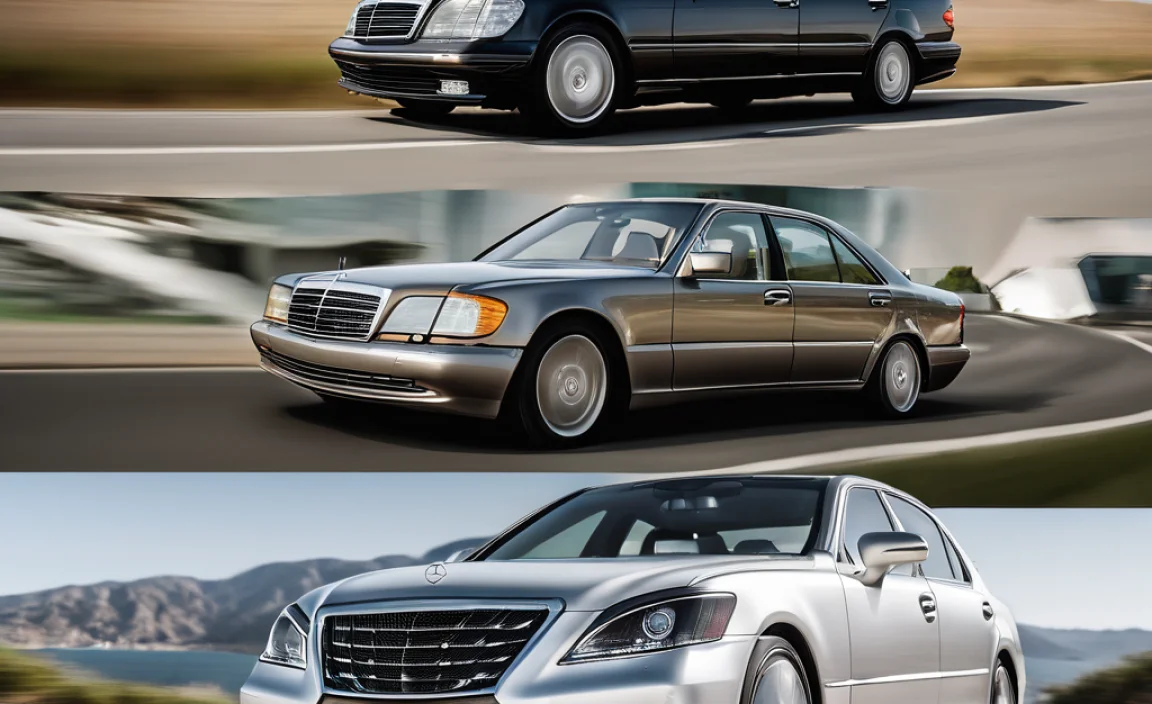
The choice between a Mercedes 420 SE and a Lexus LS 400 boils down to your personal priorities:
Choose the Mercedes 420 SE if:
- You appreciate classic European luxury, build quality, and a commanding road presence.
- You enjoy a more substantial, connected driving feel.
- You’re drawn to the prestige and engineering heritage of Mercedes-Benz.
- You are comfortable with potentially higher maintenance costs and sourcing specialized parts.
- You value cutting-edge (for its time) technology and features.
Choose the Lexus LS 400 if:
- Your absolute top priority is bulletproof reliability and peace of mind.
- You crave a supremely quiet, smooth, and comfortable ride.
- You prefer a more understated, minimalist interior design.
- You want a car that’s relatively easy and cost-effective to maintain for its class.
- You’re looking for an exceptional long-distance cruiser.
Conclusion
Deciding between a Mercedes 420 SE and a Lexus LS 400 is a fantastic dilemma to have, as both represent pinnacles of luxury automotive design from their respective origins. The Mercedes 420 SE offers a classic, substantial, and engineered-for-over-engineering experience that appeals to those who appreciate German precision and a more connected drive. It’s a car that feels like a vault, exuding a strong sense of presence and capability. On the other hand, the Lexus LS 400 stands as a testament to meticulous Japanese engineering focused on ultimate refinement, reliability, and an utterly serene driving environment. It created a new standard for quiet luxury and dependability that set the stage for Lexus’s future success.
If your heart leans towards the engaging feel and storied heritage of a Mercedes, and you’re prepared for the potential upkeep, the 420 SE will likely reward you with an exceptional driving experience. However, if your priority is long-term reliability, unparalleled smoothness, and a virtually maintenance-free ownership experience (relatively speaking for a classic), the Lexus LS 400 is an undeniable champion. Whichever you choose, you’ll be acquiring a piece of automotive history that still offers a remarkable level of comfort and luxury today. Happy driving!
Frequently Asked Questions
1. What year range does “Mercedes 420 SE” typically refer to?
The “420 SE” badge was used across different Mercedes generations. However, in the context of comparing it to the first-generation Lexus LS, people are often referring to models from the W126 S-Class (later years) or the W140 S-Class (early to mid-1990s) that featured a V8 engine of around 4.2 liters. These were flagship luxury sedans of their time.
2. Is the Lexus LS 400 more reliable than the Mercedes 420 SE?
Generally, yes. The Lexus LS 400, and Lexus vehicles from its era, are widely regarded as being more reliable and easier to maintain long-term compared to many Mercedes-Benz models of the same period. Toyota’s engineering focus on durability and simpler (though still sophisticated) systems contributed to this reputation.
3. Are parts easy to find for a Mercedes 420 SE?
Finding parts for a Mercedes 420 SE can be more challenging and expensive than for a Lexus LS 400. While many common wear items are still available, specific electronic components, interior trim pieces, or specialized mechanical parts might be harder to source and costlier when you find them. Many enthusiasts turn to specialized Mercedes-Benz parts suppliers.
4. Which car offers a quieter ride?
Both cars were lauded for their quiet cabins. However, the Lexus LS 400 is often cited as setting a new class benchmark for quietness and ride isolation. Mercedes-Benz, particularly the W140 S-Class, also employed extensive sound-deadening technologies like dual-pane glass, making it exceptionally quiet as well. It’s a very close contest, but slight edges often go to the LS for overall serenity.
5. What are the common issues to look for when buying a used 420 SE or LS 400?
For the Mercedes 420 SE, common issues include wiring harness degradation (especially in V8 models), potential failure of electronic control units (ECUs), and rust, particularly in the wheel arches and underbody. For the Lexus LS 400, issues are less severe and often related to age-related wear on suspension bushings, potential for minor electrical quirks (like power antenna or window motors), and ensuring the timing belt has been replaced according to schedule (though it’s an interference engine, failure can be catastrophic).
6. Which car is better for long road trips?
Both are excellent for long road trips due to their comfort and cruising ability. The LS 400 might have a slight edge for pure relaxation due to its unparalleled quietness and plush ride. The 420 SE offers a more substantial and stable feel, which some drivers prefer for highway dominance. Ultimately, comfort is subjective, but both are superb touring machines.
7. What kind of fuel economy can I expect from these cars?
Expect fuel economy to be quite low by modern standards, typical of large V8-powered luxury sedans of the 1980s and 1990s. For the Mercedes 420 SE, figures might range from 14-17 MPG city and 19-22 MPG highway. The Lexus LS 400 is similarly equipped, likely yielding similar results, perhaps in the 16-18 MPG city and 20-23 MPG highway range, depending heavily on driving conditions and maintenance.